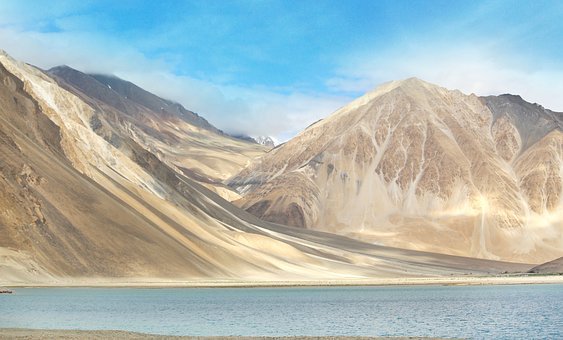Itinerary
Arrive in Srinagar (on your own) and proceed to Sonmarg. Enjoy a pony ride (on your own) up to Thajiwas Glacier. Overnight stay in Sonmar.
After breakfast, proceed to Kargil via Srinagar Leh Highway. Enjoy a short halt at Sonmarg (Known as the gateway to Ladakh & the Meadow of Gold) to admire the views. One can enjoy a pony ride to Thajiwas glacier. Notice the gradual change in the colors of the mountains as you travel to Kargil. Cross the Zojila pass & Drass region. Visit the Zojila War memorial & Kargil War memorial on the way to pay tribute to the Indian Army. It was in this very region in which the Indian Army fought and won the famous war of Kargil. Take some memorable snaps of Tololing, Tiger Hill, and the war memorial in Drass. Overnight stay in Kargil.
After an early breakfast, proceed to Alchi / Uleytokpo. En route, visit Mulbek (known for its huge Buddha Statue) and Lamayuru monastery (The oldest monastery in Ladakh). Overnight stay in Alchi / Uleytokpo.
After an early breakfast, proceed for a sightseeing tour and visit Alchi Monastery (known for its paintings). Proceed to Leh. Admire the confluence of Indus – Zanskar Rivers and the effects of Magnetic Hill (Defiance of the law of gravity). Visit Gurudwara Patthar Sahib, Kali Mata temple & Hall of Fame (A museum developed and maintained by the Indian army) and reach Leh in the evening. Overnight stay in Leh.
After breakfast, proceed for a local sightseeing tour and visit Shey Palace, Thiksey, Hemis Museum, Rancho school, and Sindhu Ghat. Overnight stay in Leh.
After breakfast, drive to Nubra Valley (Known as the Valley of Flowers and the warmest region in Ladakh) via Khardungla pass. This road is one of the highest motorable roads in the world. After spending some time at Khardungla, proceed to Nubra. Visit Sand Dunes in the evening and enjoy the double-humped camel ride (on your own). Overnight stay in Nubra.
After an early breakfast, proceed to Turtuk (A village that was won by India in the 1971 war with Pakistan) and extremely close to the border. Visit a 16th Century Mosque, (comprising of a touch of Turkish & Iranian culture), ruined fort of Dhards, and Monastery. Admire the magnificent view of the famous K2 peak (The second highest peak in the world after Mount Everest). Return to Nubra Valley for an overnight stay.
After breakfast, visit Diskit & Hunder Villages and monasteries take a stroll around the place to see the lifestyle of people living in the northernmost region of India. Proceed to Pangong Lake via Shyok Route. Pangong Lake is a saltwater body of 120 km in length and 6 – 7 Km broad at the longest point. It is bisected by the international border between India & China (2/3 of the lake is in China’s possession). Visit the exact location of the famous movie “Three idiots” & enjoy an outing along the banks of the lake. One really feels very close to nature at Pangong Lake with its scenic surroundings. On a clear sunny day, you can see seven color formations in the crystal-clear saltwater lake. Overnight stay in Pangong.
After breakfast, travel back to Leh. En route take a short halt at Changla Pass to enjoy a cup of hot steaming tea. Visit Shanti Stupa in the evening. Overnight stay in Leh.
After breakfast, get transferred to Leh Airport for boarding the flight to your destination. Tour concludes with some wonderful long-lasting memories.

